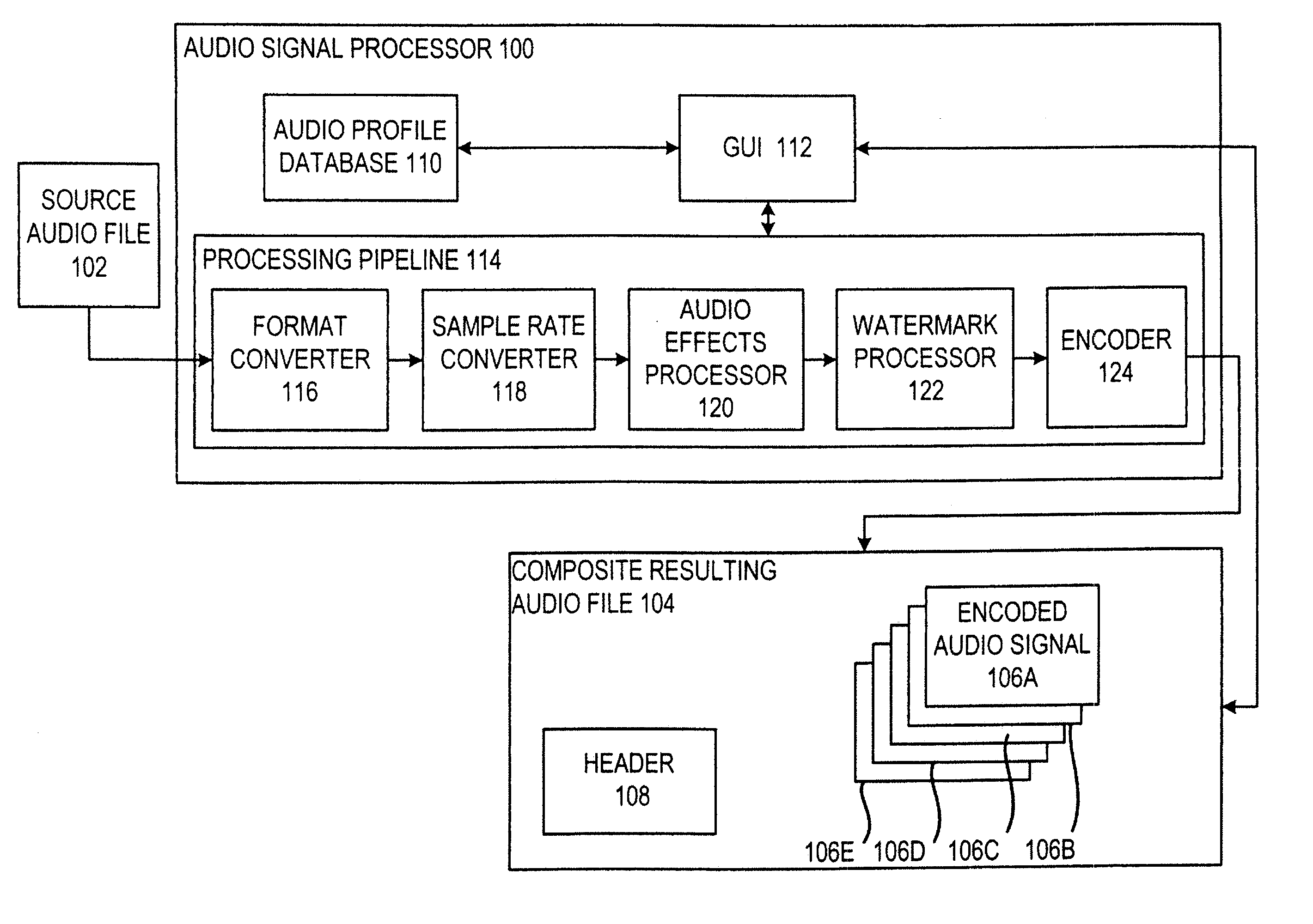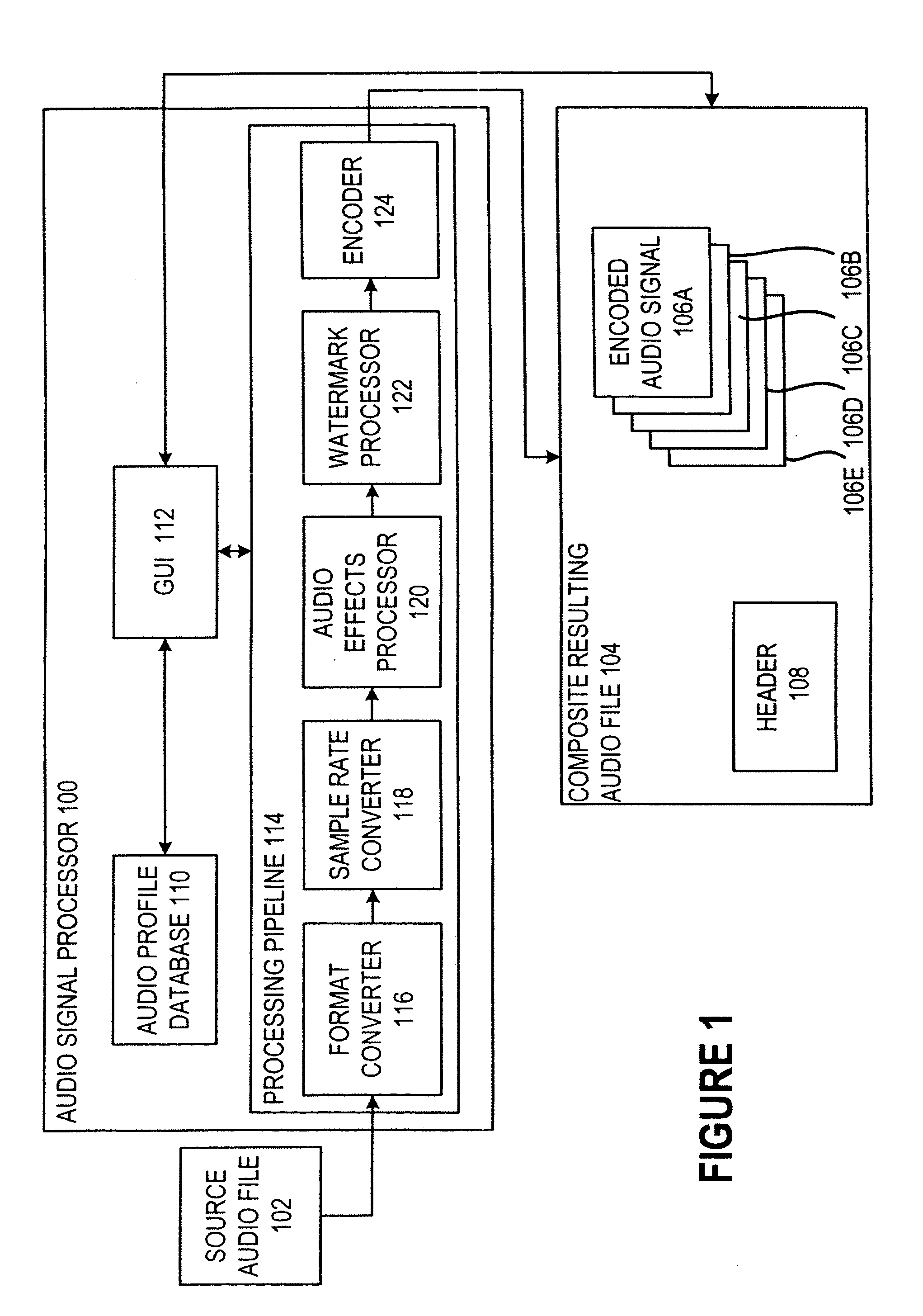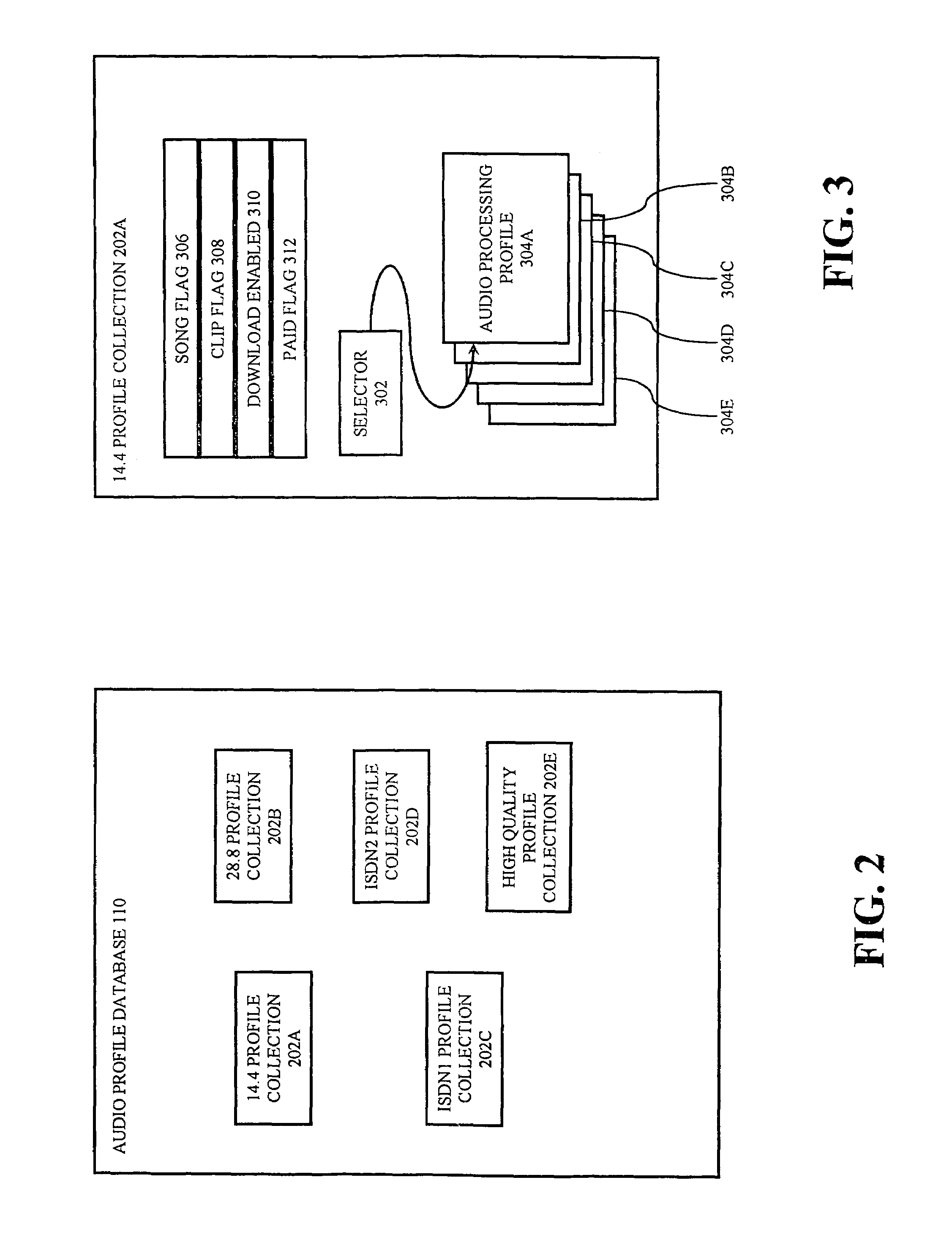Digital audio signal filtering mechanism and method
a digital audio signal and filtering mechanism technology, applied in the field of computer filtering can solve the problems of loss of detail of digital audio signals, inability to real-time deliver such digital audio signals in a native form, and general limitation of distribution of such digital audio signals, so as to achieve fast processing, filtering and encoding of other recordings. , good results
- Summary
- Abstract
- Description
- Claims
- Application Information
AI Technical Summary
Benefits of technology
Problems solved by technology
Method used
Image
Examples
Embodiment Construction
[0038]In accordance with the present invention, an audio signal processor 100 (FIG. 1) filters and encodes a source audio file 102 according to one or more audio processing profiles to produce a composite resulting audio file 104 which includes one or more encoded audio signals 106A–E. Audio signal processor 100 includes a processing pipeline 114 which performs all pre-processing, filtering, and encoding of source audio file 102 to form composite resulting audio file 104. Specifically, processing pipeline 114 includes a format converter 116, a sample rate converter 118, an audio effects processor 120, a watermark processor 122, and an encoder 124, all of which are described more completely below. Briefly, (i) format converter 116 converts source audio file 102 from a stereo format to a single-channel format and vice versa and can change precision of each sample of source audio file 102; (ii) sample rate converter 118 converts a converted signal received from format converter 116 fro...
PUM
| Property | Measurement | Unit |
|---|---|---|
| frequency | aaaaa | aaaaa |
| frequency | aaaaa | aaaaa |
| time | aaaaa | aaaaa |
Abstract
Description
Claims
Application Information
 Login to View More
Login to View More - R&D
- Intellectual Property
- Life Sciences
- Materials
- Tech Scout
- Unparalleled Data Quality
- Higher Quality Content
- 60% Fewer Hallucinations
Browse by: Latest US Patents, China's latest patents, Technical Efficacy Thesaurus, Application Domain, Technology Topic, Popular Technical Reports.
© 2025 PatSnap. All rights reserved.Legal|Privacy policy|Modern Slavery Act Transparency Statement|Sitemap|About US| Contact US: help@patsnap.com



